Eidetic Bush | Hobart
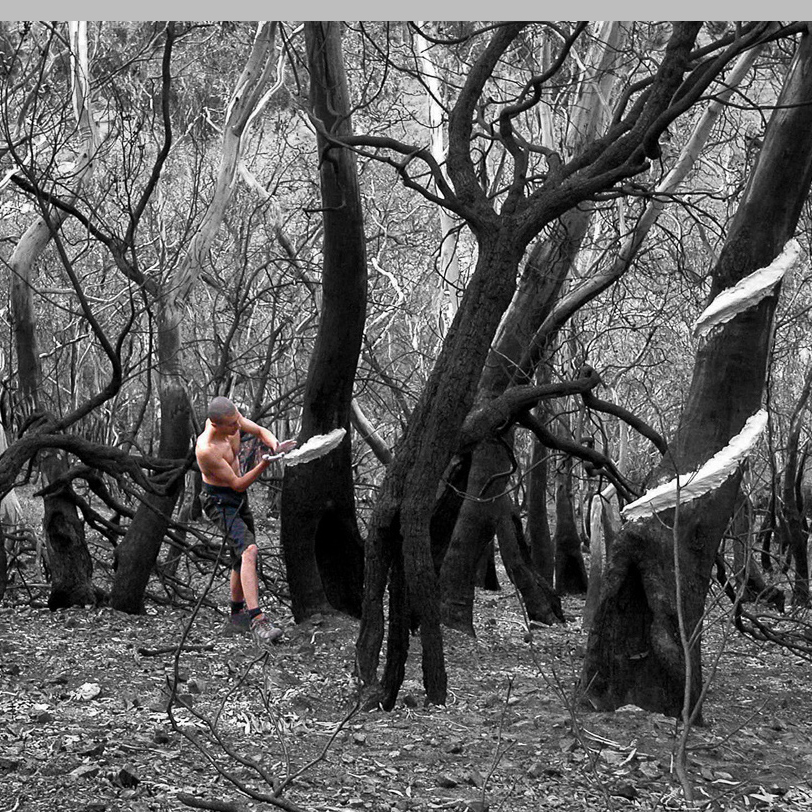

Eidetic Bush March 28 - April 16, 2003 | video-sound installation | Plimsoll Gallery, Hobart Conceived for Alcorso Foundation Artist in Residence Curated by Noel Frankham
Eidetic Bush is a multimedia installation by Italian artist Andrea Morucchio, developed during his artist residency in Hobart, Tasmania, in 2003. The project responds to the environmental and cultural devastation caused by widespread bushfires and aggressive deforestation in the region—issues that are intensified by global climate change and historical patterns of exploitation. Set amidst the haunting landscapes of the charred Tasmanian bush, the installation becomes both a poetic lament and a visionary reimagining. Through a dynamic combination of performance, sculpture, digital manipulation, and sound, Eidetic Bush meditates on themes of destruction, memory, ritual, and transformation. At the heart of the work lies a two-part creative process. In the first stage, Morucchio carried out performative actions within fire-damaged forests—engraving spirals into burnt bark and wrapping scorched tree trunks with coils of raw clay. These primal gestures evoke acts of empathy, reconnection, and spiritual reclamation. The spiral, a symbol rooted in numerous ancient cultures, appears here as an archetype of continuity and regeneration. It functions as a bridge between form and formlessness, nature and ritual, offering a silent language of renewal within a landscape stripped of life and time. The second stage of the project involved translating these real-world interventions into a digital realm. Using 3D software, Morucchio constructed virtual spirals that echo and interact with the physical ones. These digitally rendered forms were then incorporated into the immersive video component of the installation, creating an interplay between the tangible and the virtual—between human action and technological transformation.
The installation consists of two monumental rear-projected video screens, each measuring 7 by 3 meters. Suspended within the gallery space and viewable from all sides, the projections envelop the viewer in a 360-degree experience, evoking the sensation of walking through a spectral, metaphysical forest. Prior to entering the central projection space, visitors encounter a wall-mounted slideshow presenting documentary photographs of Morucchio’s performative acts in the bush—an important contextual prelude that anchors the work in a real, lived process. The visual component is accompanied by the haunting and evocative musical composition Caminantes… Ayacucho by Luigi Nono, a piece chosen not only for its visionary tension but also for its layered symbolic resonance. The reference to Ayacucho—a city historically associated with Indigenous resistance and anti-colonial struggle—aligns with the installation’s underlying themes of loss and cultural erasure. The composition also includes choral passages derived from Giordano Bruno’s De la causa, principio e uno, invoking Bruno’s visionary esotericism and his radical cosmological ideas. These references intensify the spiritual and philosophical undercurrents of the installation. Nono’s soundscape, marked by a dialectical structure of whispered pianissimi and abrupt, explosive fortissimi, underscores the temporal and emotional volatility of the work. For Nono, silence is not absence, but origin—the fertile void from which thought, and therefore sound, arises. This concept mirrors Morucchio’s own approach: the silence of the burnt forest becomes a charged void, filled with potential, vision, and reactivation. Through this synergy of visual and auditory languages, Eidetic Bush constructs a space of suspended time, a kind of eidetic dimension where imagination and perception, myth and memory, are indistinguishable. The viewer is drawn into a “shamanic” zone—part ritual, part vision quest—where ancient spiritual impulses and contemporary artistic strategies converge. Morucchio’s engagement with place, history, and cultural residue is further expanded in the accompanying exhibition catalog, which includes a carefully curated selection of over fifty quotations from thinkers, writers, and mystics across time and discipline. This textual constellation provides an interpretive compass for navigating the installation’s symbolic and aesthetic complexity. Ultimately, Eidetic Bush is a profound artistic meditation on the interplay between environmental trauma, cultural memory, and the resilient power of human imagination. It invites viewers to consider how art can serve as both witness and catalyst—capable of transforming loss into vision, and silence into a new mythopoetic language of being
My use of a ‘primitive language’ to assist artistic expression within "Eidetic Bush", respects and reflects ancient man’s capacity to connect with nature, _ at the time of the Europeans’ arrival in 1642, the Tasmanian Aborigines, thanks to an exceptional isolation lasting 10,000 years, possessed the most elemental material culture in the world _ (Jared Diamond, Guns, Germs and Steel. The Fates of Human Societies, W.W. Norton and C. NY-London, 1997), and therefore one most closely connected to and dependent on the Earth and its cycles. Before falling victim to one of the most brutal and successful genocides in the history of world colonization, the Tasmanian Aborigines, at most 4000 hunter-gatherers, represented the expression of the most profound and purest connection that man could establish with nature, the original, primal bond whereby man becomes part of the Earth and his every gesture acquires an evocative, ritualistic dimension.
In accepting the invitation to undertake the Claudio Alcorso Foundation residency, I assumed that my investigation of man’s capacity for spiritual connection with the land would occur within the pristine Tasmanian wilderness. However the coincidence of my visit with the catastrophic wave of bushfires during the development of the Eidetic Bush project - summer 2003 - prompted some major reconsideration of how best to represent a site for such reflection. The worst drought in Australia since reliable records began in 1910 the nation -wide catastrophe is the direct result of the human-induced global warming. _ The actual trend in Australian temperatures is now matching climate models of how temperatures respond to increased greenhouse gasses in the atmosphere. These greenhouse gas increases occurring today are due to human activity. _ (Nick Soudakoff, Global Warming Contributes to Australian's Worst Drought, Green Left Weekly, n° 525, 2003) Not only that, but the destruction caused by bushfires metaphorically recalls the destructiveness of a clear-felling old growth forests. _ Although Tasmania is one of the last remaining wilderness havens, more than 20,000ha of Tasmania’s native forests are clear-felled each year. _ (Annual Report of Forest Practies Board, Tasmania 1999-2000)
Eidetic Bush arises from the conviction that contemporary art must reclaim its transformative, visionary function in an age where the dominant values of technocratic, commodified society have eroded spiritual, ethical, and ecological consciousness. Drawing from a broad range of thinkers—philosophers, artists, curators, and theorists—this installation stands as a radical gesture of resistance, renewal, and reconnection with the primal and the sacred. As Piet Mondrian affirmed, the true task of art is not to reflect but to dynamically destabilize, to destroy static equilibria and foster a new balance charged with constructive-destructive energy. In Eidetic Bush, the burnt Tasmanian forest becomes the raw stage for such a dialectic: a site where the trauma of environmental destruction is met with rituals of re-signification—spirals carved into bark, clay wrapped around charred trunks—acts that channel memory and meaning into a devastated landscape. Responding to the critiques of thinkers such as Okwui Enwezor and Ronald Jones, who observed the absorption and domestication of the avant-garde into the structures of neoliberal Empire, Eidetic Bush consciously positions itself outside the mainstream. It seeks models of counter-regulation and resistance, drawing instead from the animist, shamanic, and ritualistic traditions that Western rationality has long suppressed. The artist’s actions within the burnt bush are not performative spectacles but sacral gestures, echoing what Joan Miró once called the need to rediscover the "religious essence" known to ancient and Indigenous peoples. The project is grounded in the belief, voiced by Suzi Gablik, that art must move beyond aesthetic detachment and become a catalyst for the re-enchantment of culture. In an era defined by media control, simulated values, and ecological collapse, Eidetic Bush attempts to revive the visionary imagination, myth, and archetype as necessary forces for awakening. In this sense, the installation challenges what Deleuze and Guattari described as the panoptic, capital-driven spectacle that now governs the social body, replacing tribal or ritual-based cohesion with systems of surveillance and desire management. Morucchio's work is not nostalgic primitivism, but what Kirk Varnedoe recognized as a modernist primitivism that confronts modern alienation with the irrational and archetypal. The project invokes the eidetic—the power of inner vision, of imaginal memory—as a force capable of piercing through consensus reality, echoing David Michael Levin’s call to radically interrogate the legitimized narratives of the social ego. In dialogue with Luigi Nono’s musical vision—where silence becomes the origin-source of thought—Eidetic Bush constructs a space where the viewer is immersed not only visually but spiritually. The sound, the spirals, and the immersive forest-scape become a unified, dreamlike field: a mythopoetic zone where art, ritual, and ecology merge. Ultimately, the work aims to reawaken a spiritual bond between human and nature, lost under centuries of industrial domination and Cartesian dissection. It echoes Rousseau’s intuition of the innate moral sensibility that revolts against suffering and injustice, and which art can help re-ignite. It is a protest against the passivity induced by spectacle, a mourning for the severed link with the Earth, and a call to action—not only through political will, but through the rediscovery of sacred vision as a means to imagine, and thus build, another world. “Eidetic Bush” emerges as an aesthetic and spiritual inquiry into the human capacity to perceive, remember, and reimagine the real. Developed in the aftermath of devastating bushfires in Tasmania (2003), the project transforms a burnt landscape into a sacred and visionary space, where silence, memory, and matter converge. At its core, Eidetic Bush explores how elemental gestures—such as sculpting spirals onto charred trees—can awaken an eidetic mode of seeing: a state where imagination and perception, myth and reality, the subjective and objective dissolve into one fluid continuum. This mirrors what philosopher Aldo Giorgio Gargani describes as a state of being that reconciles opposites, where silence enables reflection and creativity to emerge. The spiral, chosen instinctively, becomes a central symbol—an ancient sign of transformation and cyclical passage. It echoes Mircea Eliade’s interpretation of symbols as doorways between worlds and metaphysical states. Wrapping around burned trunks, the spiral bridges the unformed and the formed, expressing both the memory of destruction and the potential for renewal. In its twofold structure—an installation in nature and a digital re-presentation—the project juxtaposes primal creation with contemporary media. The spirals, whether physical or virtual, blur distinctions between material reality and digital manipulation. This interplay aligns with Piet Mondrian’s notion that form exists not for itself, but to create dynamic relationships. The inability to distinguish between handmade and virtual spirals is deliberate: it questions the boundaries of the visible and invisible, and seeks to spiritualize matter and materialize the spiritual, echoing Jacob Böhme’s “signatura rerum.” Musically, the work is accompanied by Luigi Nono’s Caminantes… Ayacucho, a composition deeply rooted in silence and metaphysical resonance. Nono, like the project itself, uses sound and silence to express the unspeakable, evoking forgotten knowledge and a pre-logical realm of emotion and intuition. Conceptually, Eidetic Bush is rooted in a critique of modernity’s alienation from nature. The burnt landscape serves not only as aesthetic site but as ecological and political metaphor: a testament to human-induced climate change and the ongoing desecration of wilderness. The presence of Tasmanian Aboriginal heritage, obliterated by colonial genocide, underscores the deeper tragedy of lost primal knowledge—one where every gesture held ritual meaning and man was part of Earth’s spiritual continuum. Ultimately, Eidetic Bush is an invocation: a ritualistic and meditative attempt to recover the original bond between humanity and nature, to see with the mind’s eye and listen to the silent memory of the land. It is a space where time collapses, opposites merge, and new modes of seeing—and being—are awakened.
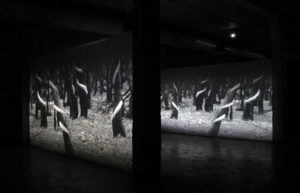
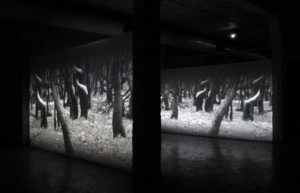
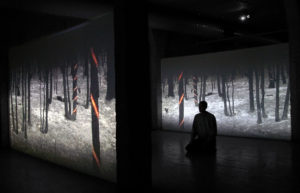
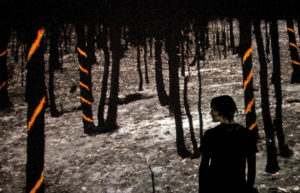
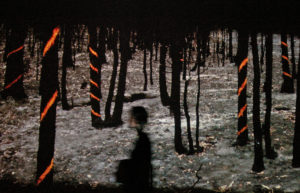
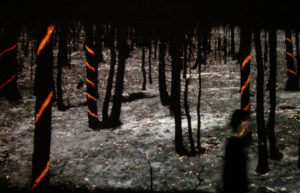
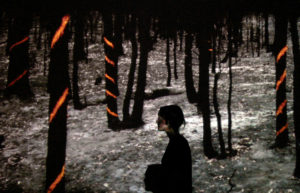
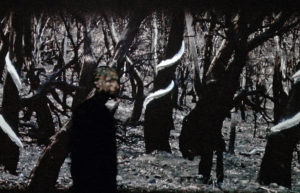
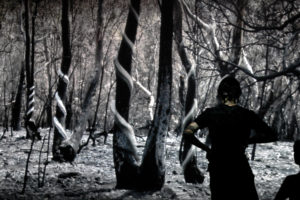
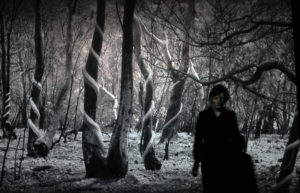
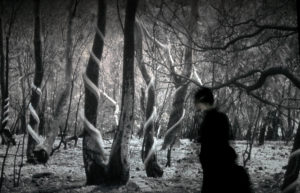
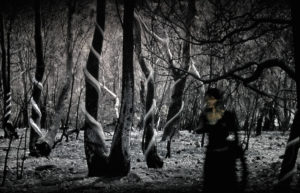
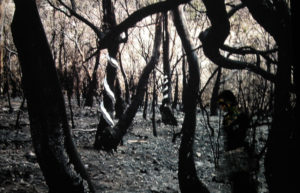
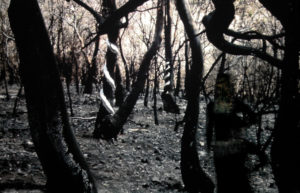
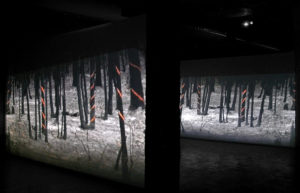
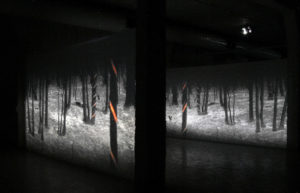
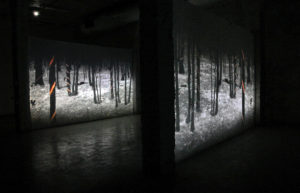
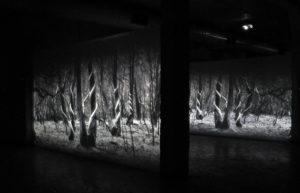
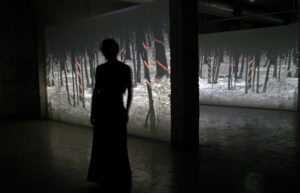
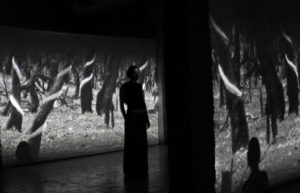
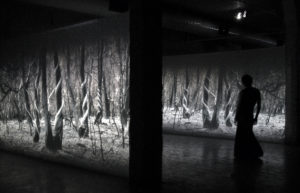
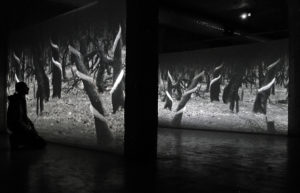
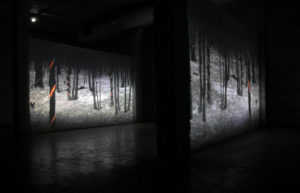
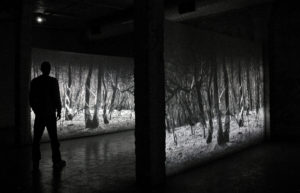
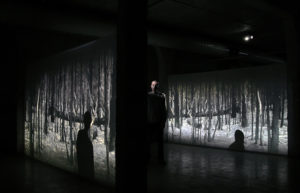
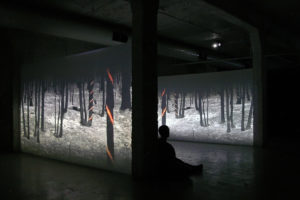

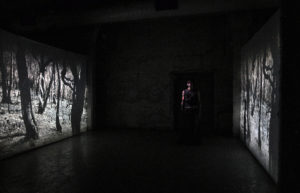

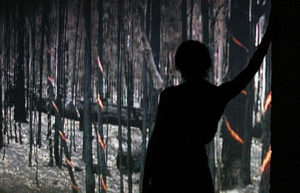

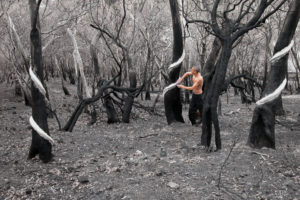
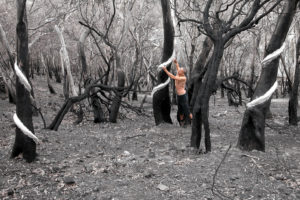
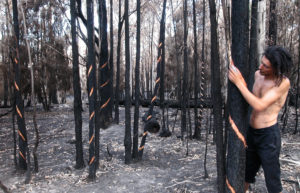
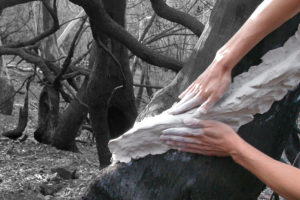
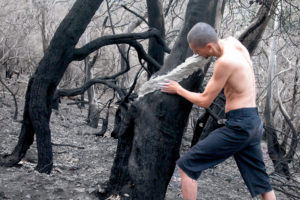
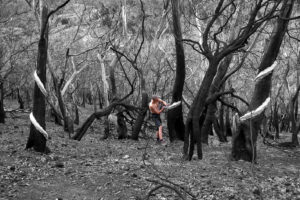
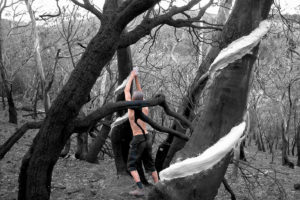
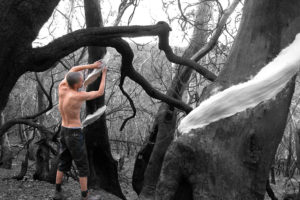
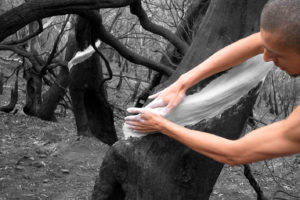
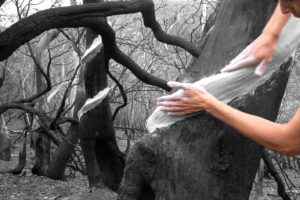
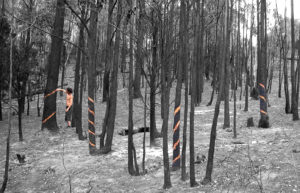
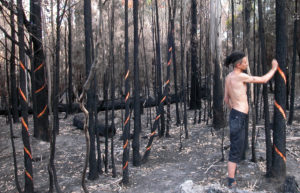
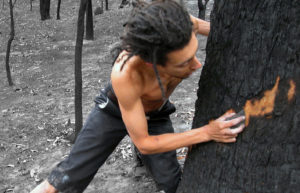
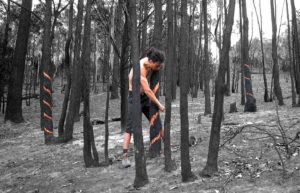
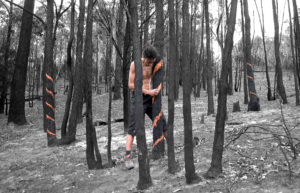
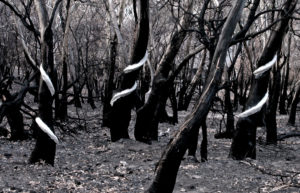

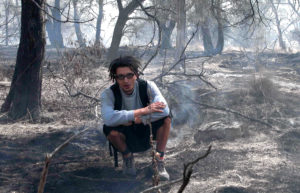
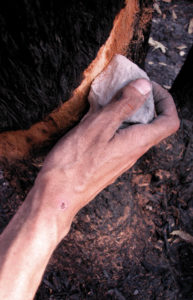
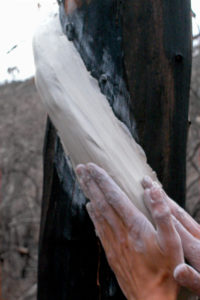
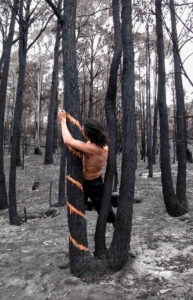
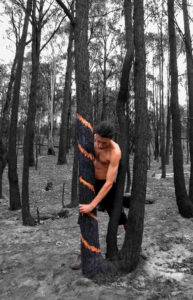
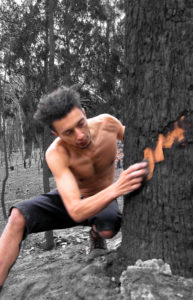
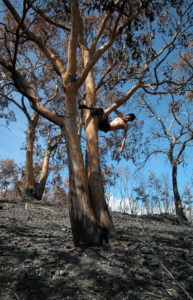
________________

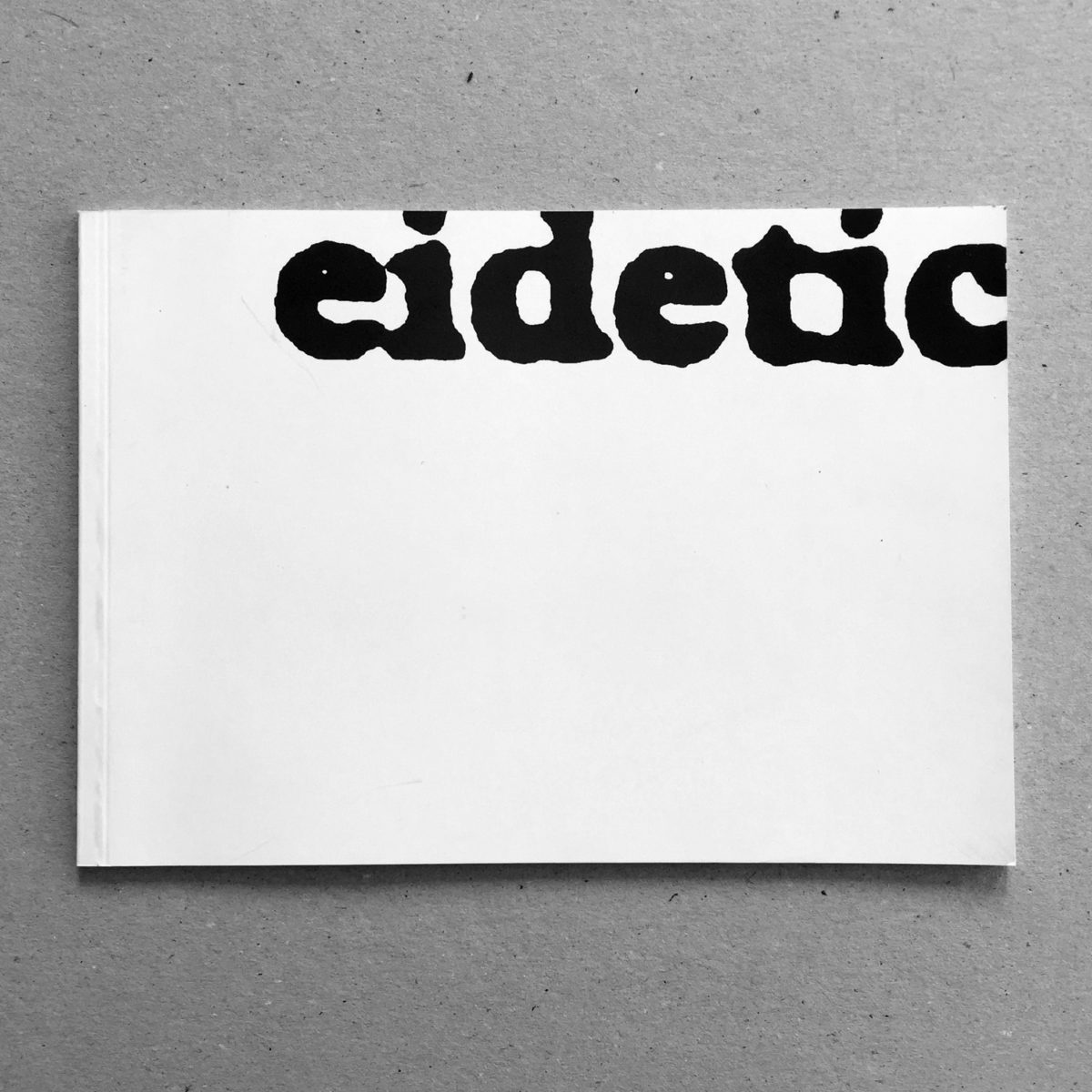 Eidetic
Eidetic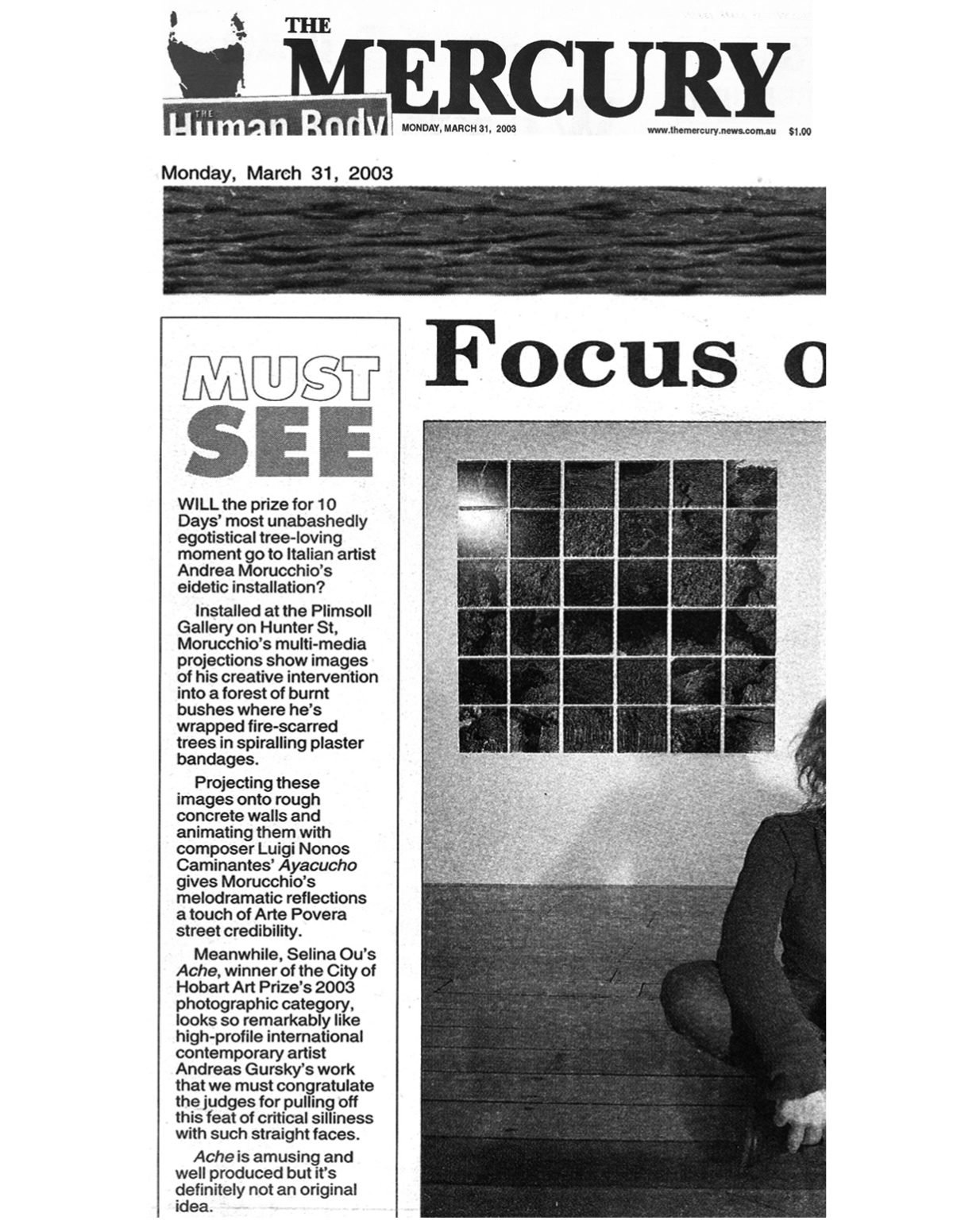 The Mercury | 31.3.2003
The Mercury | 31.3.2003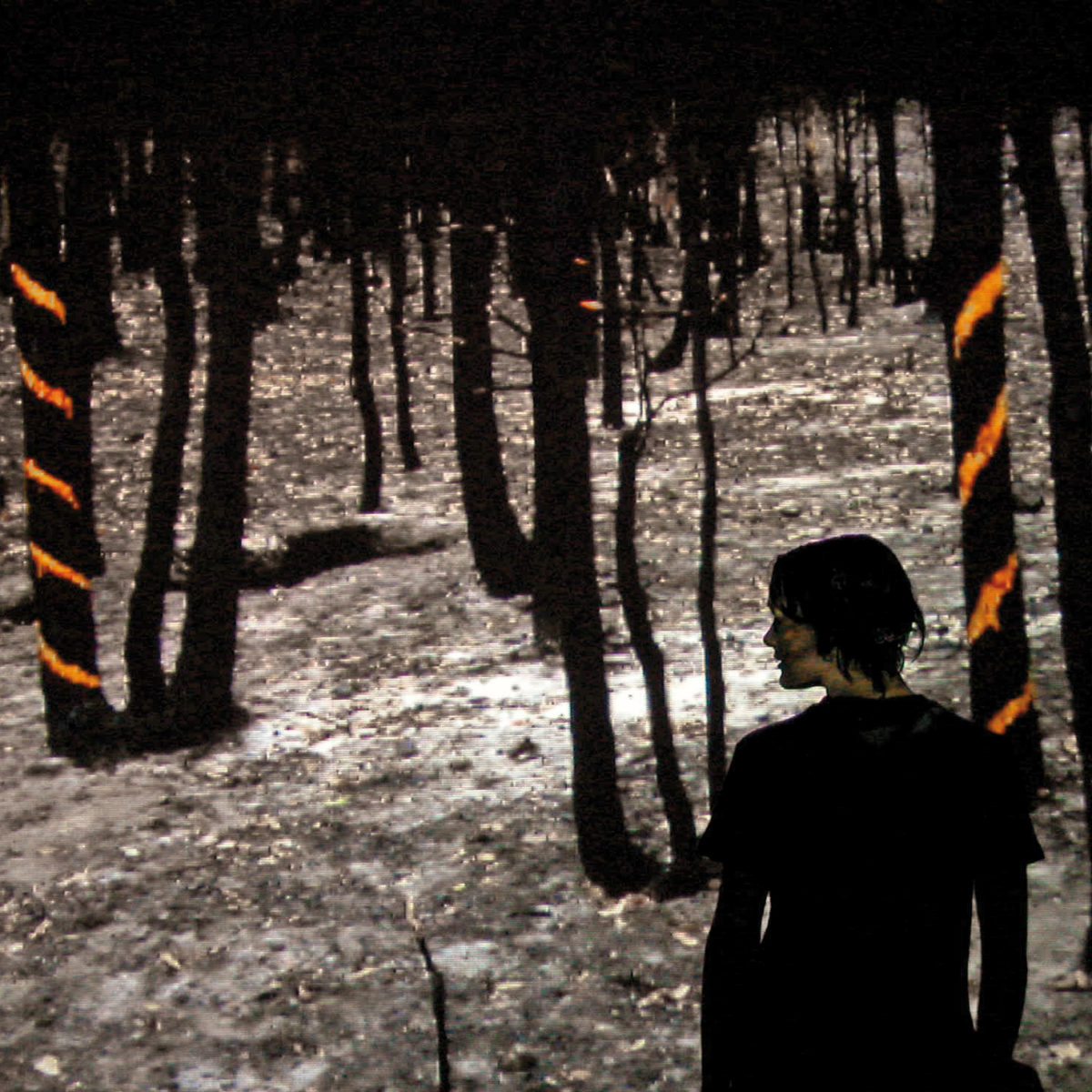 “Eidetic Bush” text by Andrea Morucchio, 2003, eng
“Eidetic Bush” text by Andrea Morucchio, 2003, eng “Eidetic Bush”, testo di Andrea Morucchio, 2003, ita
“Eidetic Bush”, testo di Andrea Morucchio, 2003, ita